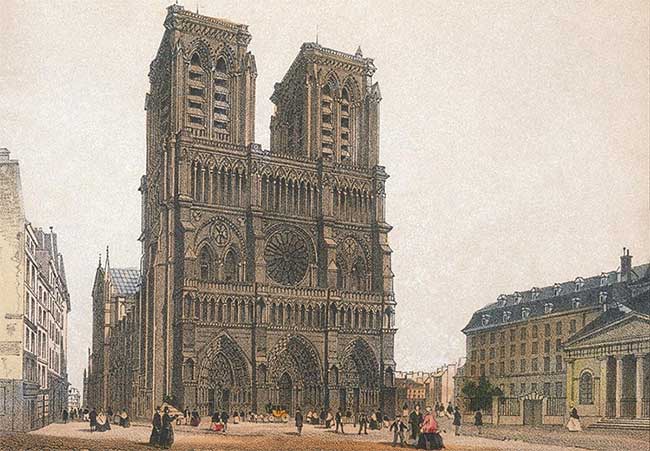11 things you need to know about Notre Dame Cathedral
Here's what you need to know about one of Europe's most iconic and historic religious landmarks.

1. Notre Dame Cathedral (French: "Cathédrale Notre-Dame de Paris") was built in the late 12th century, located on the island of Cité on the Seine in Paris. This place was destroyed at the end of the 18th century, during the French Revolution (1789). The restoration work was directed by architect Eugène Viollet-le-Duc and was not completed until the end of the 19th century.

2. Emperor Napoleon I chose this place for his coronation in 1804, in the presence of Pope Pie VII. At the end of August 1944, the church bells rang when General De Gaulle entered the main hall to commemorate the soldiers who died on the occasion of the liberation of Paris from the Nazi occupation.

3. The church keeps a lot of works of art. It is also one of the most visited places in the world. The popularity of the church was eternalized with the classic work "The Hunchback of Notre Dame" by the great writer Victor Hugo in 1831.

4. The Eiffel Tower seems to be more famous, but based on the number of tourists visiting, Notre Dame is the most popular attraction in Paris. According to the Guardian, 13 million visitors come here each year, nearly double the Eiffel Tower's 7 million.

5. The large bells are considered a 'treasure' of Notre Dame Cathedral in Paris, including a bell weighing up to 13,000kg and a bell tree weighing 500kg. To see them, visitors have to go through 140 stairs.

6. The rose window at Notre Dame Cathedral in Paris is a famous work of glass art around the world. Light shines through the glass door, when entering the church, it will change into different colors with the meaning of reminding everyone: each person is like a color, everyone is special. (Image: Getty).

7. In the church is kept the largest organ in France dating from the 18th century. The instrument has 5 keyboards, 109 stops and nearly 7374 pipes. In the 1990s, the guitar was restored at a cost of $2 million and took 40,000 hours to complete.

8. The church frame is made from the wood of 1,300 oak trees, equivalent to 21 hectares of forest.

9. In the spring of 2013, a swarm of bees made a nest on the roof of the holy store. By raising beehives, Notre Dame wants to recall the beauty of creativity and human responsibility for it.

10. The shadow of 'The Hunchback of Notre Dame'. Notre Dame Cathedral in Paris is known to many readers around the world through the famous novel by Victor Hugo - 'The Hunchback of Notre Dame'. But not everyone knows that visitors to the church can actually see the silhouette of the legendary Quasimodo figure. When leaving the church, if you glance up to the left hand side of the door, you will most likely catch the shadow of an angel statue, which, when reclined above the arch, is very similar to famous image of the hunchback ringing the bell. Many people believe that this is what the writer Victor Hugo saw and was inspired to write on the classic novel published in 1831.

11. Icon instead of invoice. Each stonemason hired during Notre Dame's more than 200-year-long construction has carved into the stone a distinct symbol to 'report' the amount of work completed and claim pay. Each craftsman designs his or her own symbol, and engraves each stone pillar they build. These icons are scattered throughout the church. Over the centuries, they've mostly faded or been erased, but there are still plenty of symbols that can be found if visitors pay close attention.
- The scene inside Notre Dame Cathedral after the fire
- Notre Dame Cathedral in Tournai
- Notre Dame Cathedral Amiens - France
- Notre Dame du Haut Chapel
- Fancy with famous places cut unique paper jigsaw
- Watching Saigon in the past and now full of fun through the
- Church of Our Lady of Chartres - France
- The 5 most mysterious legends in the magnificent city of Paris
- 10 famous architecture projects in Saigon
- Old Saigon and now through 10 typical projects
- The disease makes you ready to scratch your face, skinning ... just because you think it will be better
- Silkworms change genes for artificial silk production
 'Fine laughs' - Scary and painful torture in ancient times
'Fine laughs' - Scary and painful torture in ancient times The sequence of numbers 142857 of the Egyptian pyramids is known as the strangest number in the world - Why?
The sequence of numbers 142857 of the Egyptian pyramids is known as the strangest number in the world - Why? History of the iron
History of the iron What is alum?
What is alum?